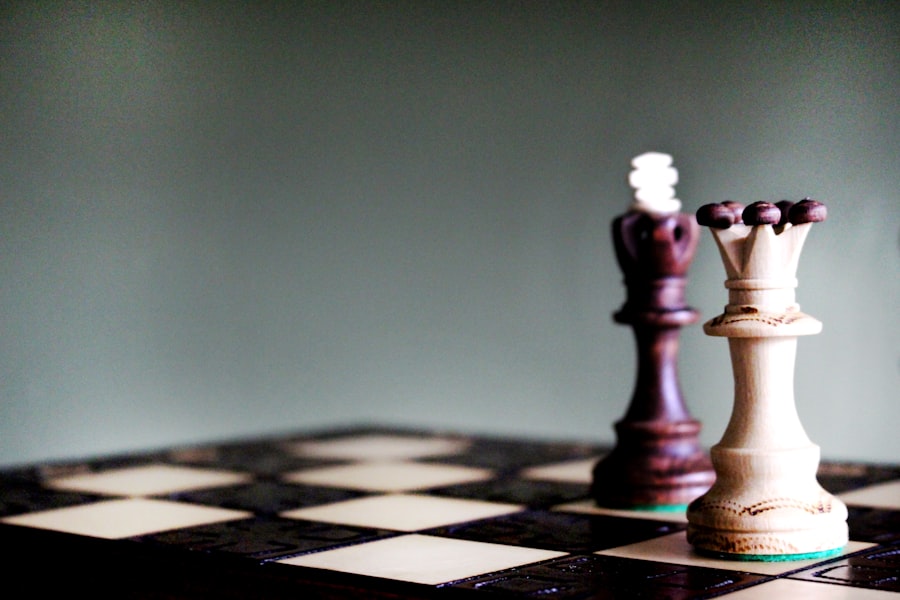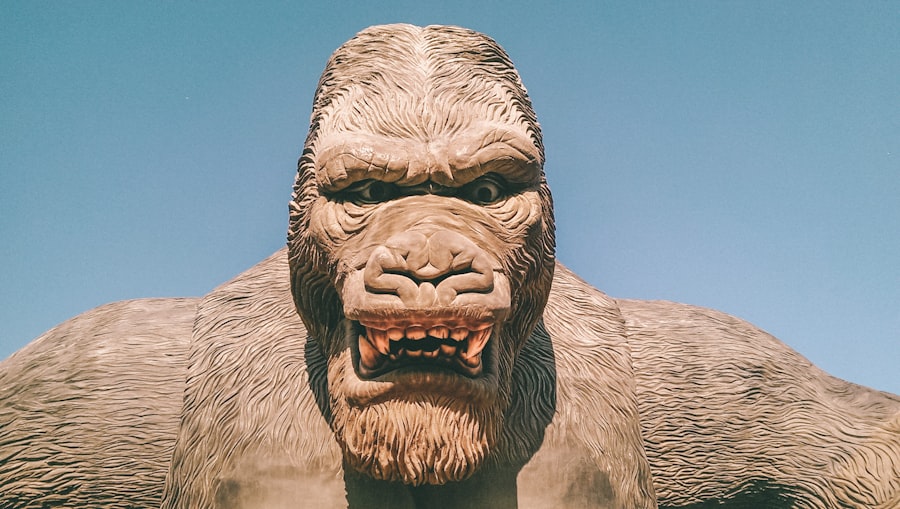Kaiju, a term that translates to “strange beast” in Japanese, refers to a genre of giant monster films that has captivated audiences for decades. These colossal creatures, often depicted as towering over cities and wreaking havoc, have become iconic symbols of both fear and fascination. You may find yourself drawn to the sheer scale and power of these monsters, which often serve as metaphors for humanity’s struggles against nature, technology, and even itself.
The allure of kaiju lies not only in their monstrous appearances but also in the complex narratives that surround them, reflecting societal anxieties and cultural themes. As you delve deeper into the world of kaiju, you will discover that these creatures are more than just mindless destroyers. They embody a rich tapestry of cultural significance, historical context, and artistic expression.
From the early days of cinema to modern blockbusters, kaiju have evolved, adapting to the changing landscape of film and society. This article will explore the history, design influences, physical characteristics, and cultural impact of kaiju in both Japan and America, providing you with a comprehensive understanding of these fascinating giants.
Key Takeaways
- Kaiju are giant monsters from Japanese folklore and popular culture
- Kaiju have a long history in both Japanese and American entertainment
- Cultural influences such as mythology and technology impact the design of Kaiju
- Japanese Kaiju are often depicted with reptilian features and unique abilities
- American Kaiju are often portrayed as more humanoid and with destructive powers
History of Kaiju in Japan and America
The Reflection of Societal Issues
As you delve into the history of kaiju, you’ll notice that these films often reflect the societal issues of their time, making them relevant across generations. This is evident in the way kaiju films address concerns such as nuclear warfare, environmental destruction, and humanity’s relationship with nature.
The American Take on Kaiju
In America, the fascination with giant monsters took a different trajectory. While films like “King Kong” laid the groundwork for American kaiju, it wasn’t until the late 20th century that the genre gained significant traction. The 1998 release of “Godzilla” marked a turning point, introducing American audiences to the concept of kaiju on a grand scale. However, it was the 2014 reboot that reignited interest in the genre, leading to a resurgence of kaiju films in Hollywood.
Divergent Cultural Interpretations
As you examine the developments in American kaiju, you’ll notice how American interpretations often differ from their Japanese counterparts, reflecting distinct cultural values and storytelling techniques. This divergence in approach has led to a unique and fascinating evolution of the kaiju genre in both Japan and America.
Cultural Influences on Kaiju Design

The design of kaiju is deeply rooted in cultural influences that shape their appearance and behavior. In Japan, traditional folklore and mythology play a significant role in inspiring these monstrous beings. Creatures like dragons and yokai have influenced the design of kaiju, imbuing them with a sense of mystique and otherworldliness.
As you consider these influences, you may appreciate how they connect modern audiences to ancient stories, creating a bridge between past and present. In contrast, American kaiju designs often draw from different sources. The influence of science fiction and horror genres is evident in the way these monsters are portrayed.
For instance, American kaiju frequently incorporate elements of technology and alien life forms, reflecting societal fears about scientific advancement and extraterrestrial threats. This divergence in design philosophy highlights how cultural context shapes not only the appearance of kaiju but also their narrative roles within films. As you explore these differences, you’ll gain insight into how each culture interprets the concept of monstrosity.
Physical Characteristics of Japanese Kaiju
| Kaiju | Height | Weight | Appearance |
|---|---|---|---|
| Godzilla | 50 meters | 90,000 tons | Lizard-like, with dorsal plates |
| Mothra | 30 meters | 15,000 tons | Giant moth with colorful wings |
| King Ghidorah | 150 meters | 70,000 tons | Three-headed dragon with golden scales |
Japanese kaiju are often characterized by their unique physical traits that set them apart from their American counterparts. You may notice that many Japanese kaiju possess a more organic appearance, with features inspired by real animals or mythical creatures. For example, Godzilla’s reptilian form is reminiscent of dinosaurs, while other kaiju like Mothra exhibit insect-like characteristics.
This organic design approach emphasizes a connection to nature and often reflects themes of environmentalism. Additionally, Japanese kaiju tend to have exaggerated proportions that enhance their imposing presence on screen. Their towering heights and massive scales create a sense of awe and terror as they clash with cities and military forces.
The use of practical effects and suitmation techniques in early films adds a tactile quality to these creatures, making them feel more tangible and relatable. As you observe these physical characteristics, you’ll appreciate how they contribute to the overall impact of kaiju films, evoking both fear and empathy from audiences.
Physical Characteristics of American Kaiju
American kaiju often diverge significantly from their Japanese counterparts in terms of physical characteristics. You might find that many American monsters are designed with a more mechanical or monstrous aesthetic, emphasizing their otherworldly origins or technological enhancements. For instance, creatures like Pacific Rim’s Jaegers showcase a blend of human engineering and monstrous traits, reflecting America’s fascination with technology and innovation.
Moreover, American kaiju frequently exhibit a more aggressive demeanor compared to their Japanese counterparts. Their designs often emphasize sharp angles and menacing features that evoke fear rather than empathy. This approach aligns with the action-oriented narratives prevalent in Hollywood films, where destruction is often prioritized over character development.
As you analyze these differences in physical characteristics, you’ll gain a deeper understanding of how cultural values influence the portrayal of monsters on screen.
Differences in Abilities and Powers

When it comes to abilities and powers, Japanese and American kaiju exhibit distinct differences that reflect their respective cultural narratives. Japanese kaiju often possess abilities rooted in nature or mythology. For example, Godzilla’s atomic breath symbolizes the destructive power of nuclear energy while also serving as a metaphor for humanity’s self-destructive tendencies.
Other kaiju may have regenerative abilities or elemental powers that connect them to natural forces. In contrast, American kaiju frequently showcase powers that emphasize technological advancements or alien origins. You may notice that many American monsters possess advanced weaponry or abilities derived from science fiction elements.
This focus on technology often mirrors societal concerns about human innovation outpacing ethical considerations. As you explore these differences in abilities and powers, you’ll see how they reflect broader themes within each culture’s storytelling traditions.
Impact of Kaiju Designs on Pop Culture
The impact of kaiju designs on pop culture is undeniable, as these monstrous figures have permeated various forms of media beyond film. You might find yourself encountering kaiju in video games, comic books, merchandise, and even theme park attractions. The visual appeal of these creatures has made them iconic symbols that resonate with fans worldwide.
Their designs have inspired countless artists and creators who seek to capture the essence of these giants in their own work. Moreover, kaiju have become cultural touchstones that spark discussions about environmentalism, technology, and humanity’s relationship with nature. As you engage with pop culture references to kaiju, you’ll notice how they serve as vehicles for social commentary and reflection on contemporary issues.
From fan conventions celebrating these monsters to academic analyses exploring their significance, kaiju continue to shape popular culture in profound ways.
Future Trends in Kaiju Design
As you look toward the future of kaiju design, it’s clear that innovation will play a crucial role in shaping the next generation of these iconic monsters. Advances in technology will likely lead to even more realistic visual effects and animation techniques that enhance the portrayal of kaiju on screen. You may anticipate seeing hybrid designs that blend traditional elements with modern aesthetics, creating unique interpretations that resonate with diverse audiences.
Additionally, there is a growing trend toward inclusivity and representation within kaiju narratives. As filmmakers seek to tell stories that reflect a broader range of experiences and perspectives, you might witness an emergence of new kaiju that challenge traditional archetypes. This evolution will not only enrich the genre but also allow for deeper explorations of themes related to identity and culture.
In conclusion, the world of kaiju is vast and multifaceted, encompassing rich histories, cultural influences, and evolving designs that continue to captivate audiences around the globe. As you engage with this genre, you’ll find yourself drawn into a realm where monsters become symbols of our deepest fears and aspirations—a testament to humanity’s enduring fascination with the unknown.
